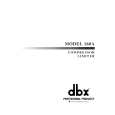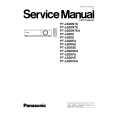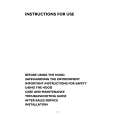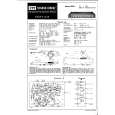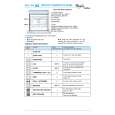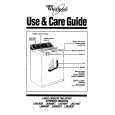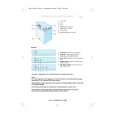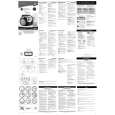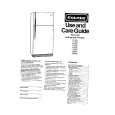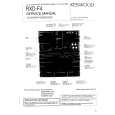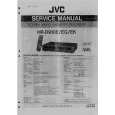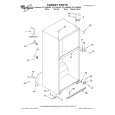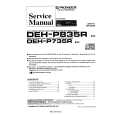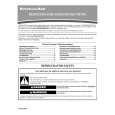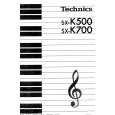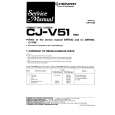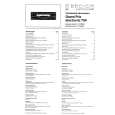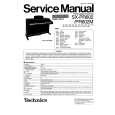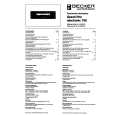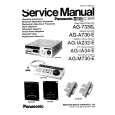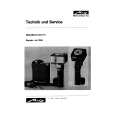|
|
|
Kategorie
|
|
Informacje
|
|
Polecamy
|
|
|
 |
|
|
Dla tego produktu nie napisano jeszcze recenzji!
 ;
Schematy są ale można wysilić się i zrobić kolorowy skan i o większej rozdzielczości. Wtedy schematy płytek będą czytelniejsze. Całość super jako wartość merytoryczna. Wszystkie dane potrzebne do podłączenia różnego rodzajów urządzeń takich gramofon, CD itd.
 ;
Szybko, sprawnie i tanio. Serwis godny polecenia. Będę polecał innym
 ;
Ogólnie jest OK, z wyjątkiem obrazu płyty głównej, który jest miejscami mało czytelny, ale można sobie poradzić.
 ;
Dokładna dokumentacja, pomogła w szybkiej naprawie telewizora. Dziękuję!
 ;
jedyne do czego mogę mieć zastrzeżenie to jakość zdjęć zawartych w przesłanej instrukcji serwisowej ponieważ są fatalnej jakości, praktycznie nieczytelne. tak poza tym jestem zadowolony to jest to czego szukałem.
VL-Z100S-S/H-S/E-S VL-Z300S-S/H-S/E-S
5. INSPECTION AND MAINTENANCE ITEMS AND INTERVALS
In order to maintain the quality of the mechanism section, perform the following maintenance and inspection. After repairing the mechanism section, perform the following maintenance regardless of the number of hours of use by the user.
5-1. Maintenance and inspection list
Inspection and maintenance location Tape running section (See7-3.) Drum section, Video head (See 7-3.) 500 Number of hours of use (h) 1,000 1,500 2,000 3,000
� � � Replace.
� � � Clean.
� � � Lubricate.
� � � Check.
Symptoms observed at the time of maintenance � Block noise � Clogging of head � Damage to tape
Notes and remarks Note: If no envelope output is obtained in spite of the video head being cleaned, replace the drum component. (If the envelope output is normal, refer to "10. USEFUL TIPS".) � Replace if any abnormal condition is found.
<Rollers> � Replace if abnormal rotation or swing (large) is found. <Others> � Cleans the portions that come in contact with the tape (the lower drum helical portion in particular). Use the specified cleaning liquid. Pinch roller Capstan motor (Timing belt) Swing arm S reel table, Tu reel table Center gear boss Relay pulley shaft � Tape not running � Tape sagged � Block noise � Abnormal noise
� Abnormal noise
� Apply oil. [Oil] Cosmo Hydro HV22 Note: Apply oil to the shaft and lightly wipe it off with a cloth. � Replace if any abnormal condition (noise etc.) is found. � If a part is out of spec, replace it.
Loading motor Mode SW Abnormal noise
� Ejecting cannot be made. � Mode cannot be set. � Tape not running � Tape sagged � Damage to tape � Abnomaly in reproduced picture
Performance check Driving Running system
PB and VS/R winding torque PB, VS/R and loading back tension S reel table unloaded torque
[Oil] Cosmo Hydro HV22 [Grease] Molykote YM-103 Sankei Chemical CFD-409Z
[Loctite adhesive] Three Bond 1401B [Cleaning liquid] Industrial ethyl alcohol
5-2. Cautions in handling the mechanism
(1) Cut washers removed at the time of part replacement etc. should be replaced with new ones without fail. (2) Because no volume adjustment is available in this mechanism, cleaning or part replacement should be performed if the setting is not satisfied. (3) About oil a) Be sure to use the specified oil. (If any oil other than the specified oil is used, various troubles will occur.) b) When lubricating the bearing, be sure to oil free from foreign particles such as dust. (If oil in which foreign particles such as dust are mixed is used, it will cause wear and seizure to the bearing.) c) The term "One drop of oil" here means the amount of oil on the point of a needle etc. shown in Fig.1. (4) Repairing of circuits, final adjustment of running system, etc. should be performed with the cassette controller assembly installed in the mechanism. (5) When operating the mechanism singly, apply voltage to the loading motor to drive it. The voltage between the terminals should be 3 to 4V DC. (Do not apply external voltage to the loading motor with the mechanism connected with the main circuit board. Doing so could cause a failure.) (Turning the gears forcedly by hand may cause them to get damaged.) When placing the mechanism singly, use an appropriate spacer so that the capstan motor is not rubbed. (6) When installing the cassette controller, push the portion indicated by "A" in Fig.2. Do not push other portions. (7) Take care not to deform the components of the mechanism.
Oil
�1.5 or less Fig. 1
Fig. 2
9
|
|
 |
> |
|
